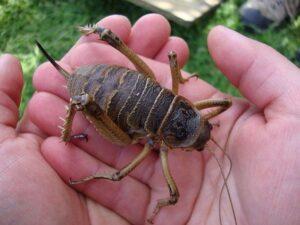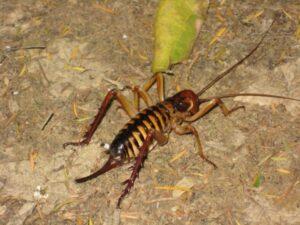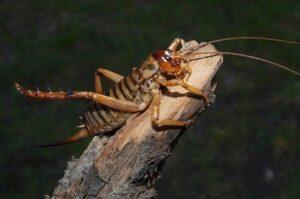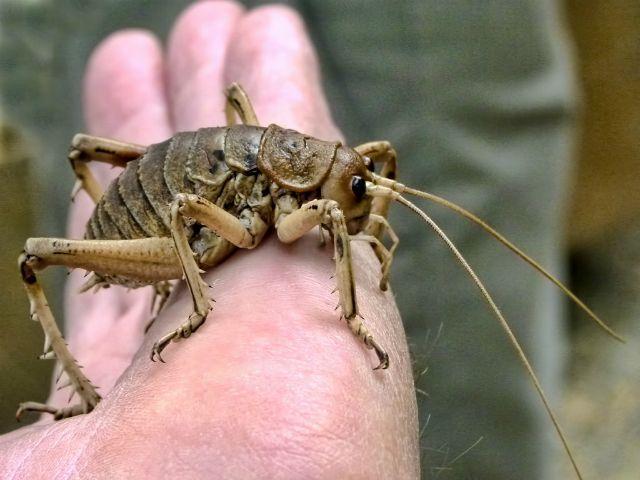Tree Weta (Hemideina)
Updated on
17/11/2022Tree weta or Hemideina is a genus of wetas belonging to the Anostostomatidae family endemic to New Zealand. All seven species in this genus dwell throughout New Zealand, except Southland and Otago.
Scientific Classification
- Class:Insecta
- Order:Orthopetra
- Family:Anostostomatidae
- Genus:Hemideina
Conservation Status
Species
- Auckland tree weta (Hemideina thoracica)
- Hawke’s bay tree weta (Hemideina trewicki)
- Wellington tree weta (Hemideina crassidens)
- Canterburry tree weta (Hemideina femorata)
- Mountain stone weta (Hemideina maori)
- Bank’s peninsula tree weta (Hemideina ricta)
- West coast bush weta (Hemideina broughi)
Description
The adult tree wetas measure around 40 mm – 60 mm.
The colors differ from one species to the other. The Auckland tree weta has a white or brown body with black stripes or spots and a dark brown or black head. In contrast, the Bank’s peninsula tree weta appears reddish-brown.
Most species of this genus display sexual dimorphism, with males having bigger heads and stronger jaws than their female counterparts. The head of the male tree wetas is double the length of that of females.
Distribution: Throughout New Zealand
Habitat: Forests, grasslands, shrub lands, caves, suburban gardens
Do they bite: Yes; both males and females would deliver a painful bite due to their powerful jaws if threatened or disturbed
Lifespan: 6-10 months in lowlands; several years in alpine regions
Predators: Birds, bats, reptiles
Behavior and Characteristics
Temperament
The tree wetas live on trees and mostly remain active at night when they feed. During the day, however, they hide inside the holes of the tree branches constructed by the moth larvae or beetle. They are social, primarily seen in groups, and seldom prefer to live alone.
Diet and Feeding
They follow an omnivorous diet, feeding on small insects, leaves, fruits, and flowers.
Nesting
They nest in the holes inside the trees, known as a gallery maintained by the wetas. If the hole’s opening has any growth or bark surrounding it, the weta clears them off immediately by chewing it. A single gallery called a weta motel comprises around ten females and one or at least two males. The wetas mostly remain squeezed together in a single hole during spring and autumn. However, during the colder times, they mostly dwell in a segregated manner.
Fights
During the day, the gatherings of wetas remain peaceful; however, at night, they become violent, mainly the males, fighting amongst each other to acquire a female mate. The larger male among the clan would accommodate the best place inside the tunnel. The stronger male would fight and compete for their position in the tunnel driving the weaker males out. Though the fights are not fatal, the defeated opponent could often lose their antennae and legs.
Communication
The primary communication between the tree wetas is through stridulation, which involves rubbing certain body parts together. The femur on their hind leg has several pegs, which they often use to rub against the comb-like ridges present on the abdomen. The result is a chirping, scratching, or rasping sound mainly produced when they feel threatened or in danger.
Life Cycle
1. Egg Stage
The female lays eggs during autumn and winter that hatch in spring after eight months from being laid. The female buries the eggs deep into the soil using her ovipositor, which appears long and curved.
2. Nymph Stage
The nymphs look like a miniature version of their adult counterparts and take about ten months to mature fully.
FAQs
Yes, one could keep them as pets in suburban gardens.
Source
i.pinimg.com, photos.travelblog.net, alchetron.com








